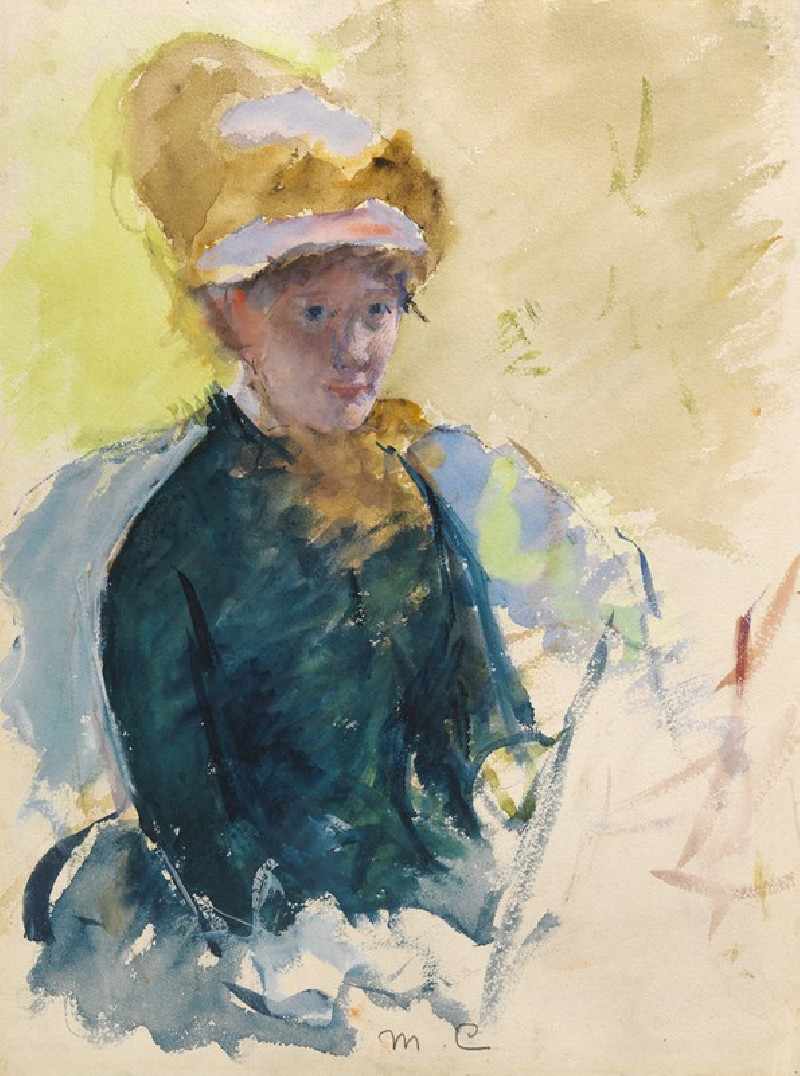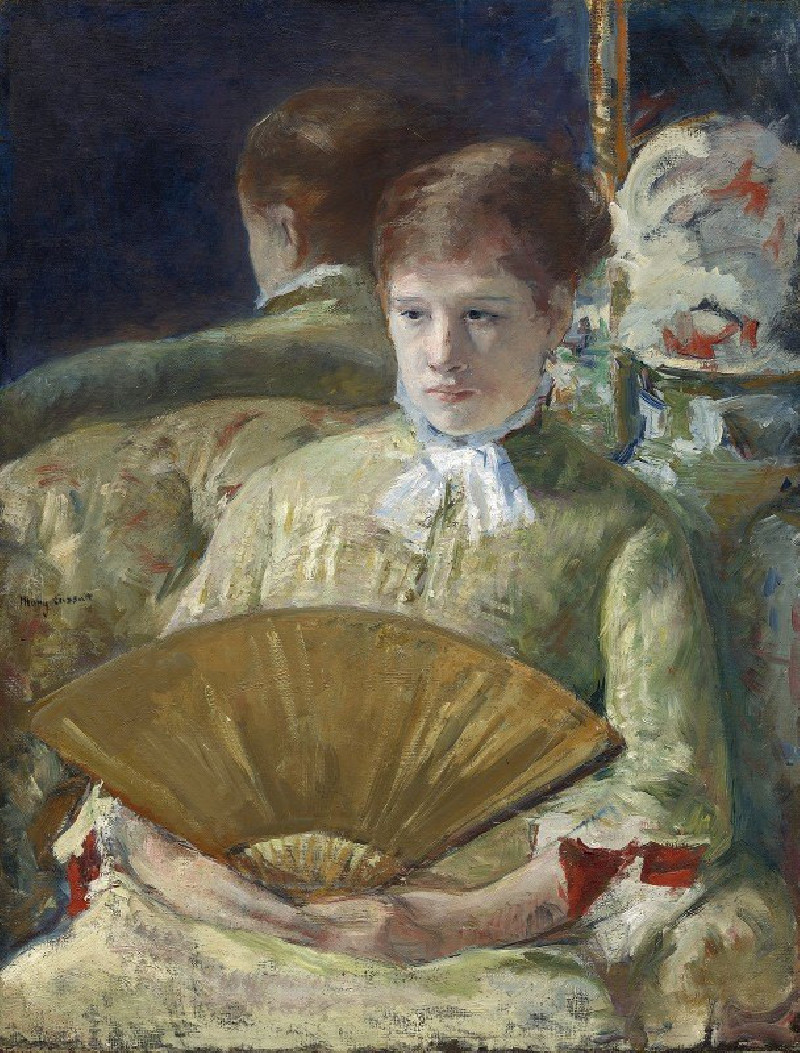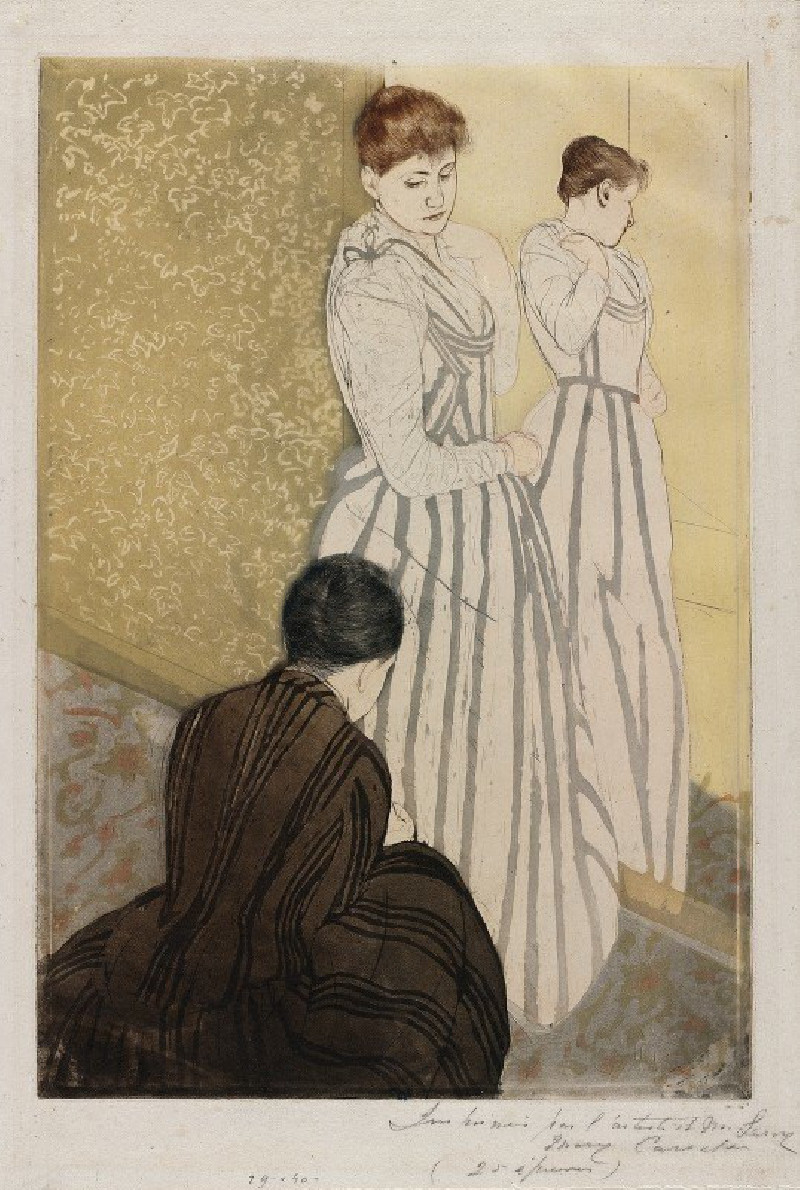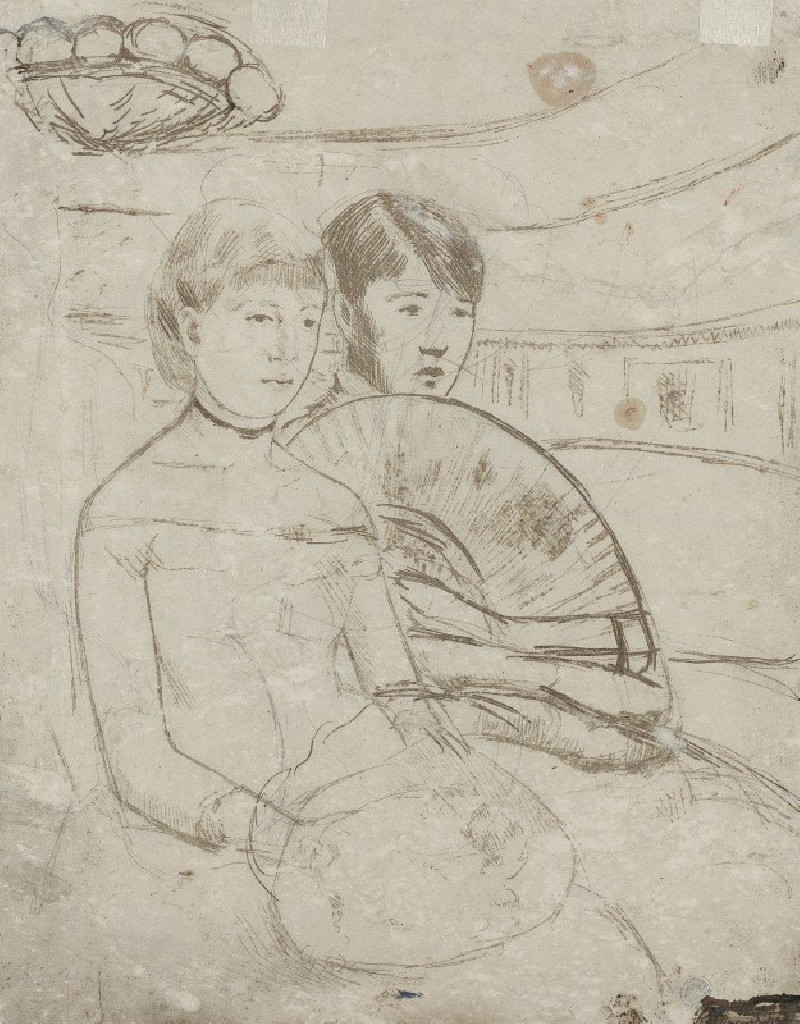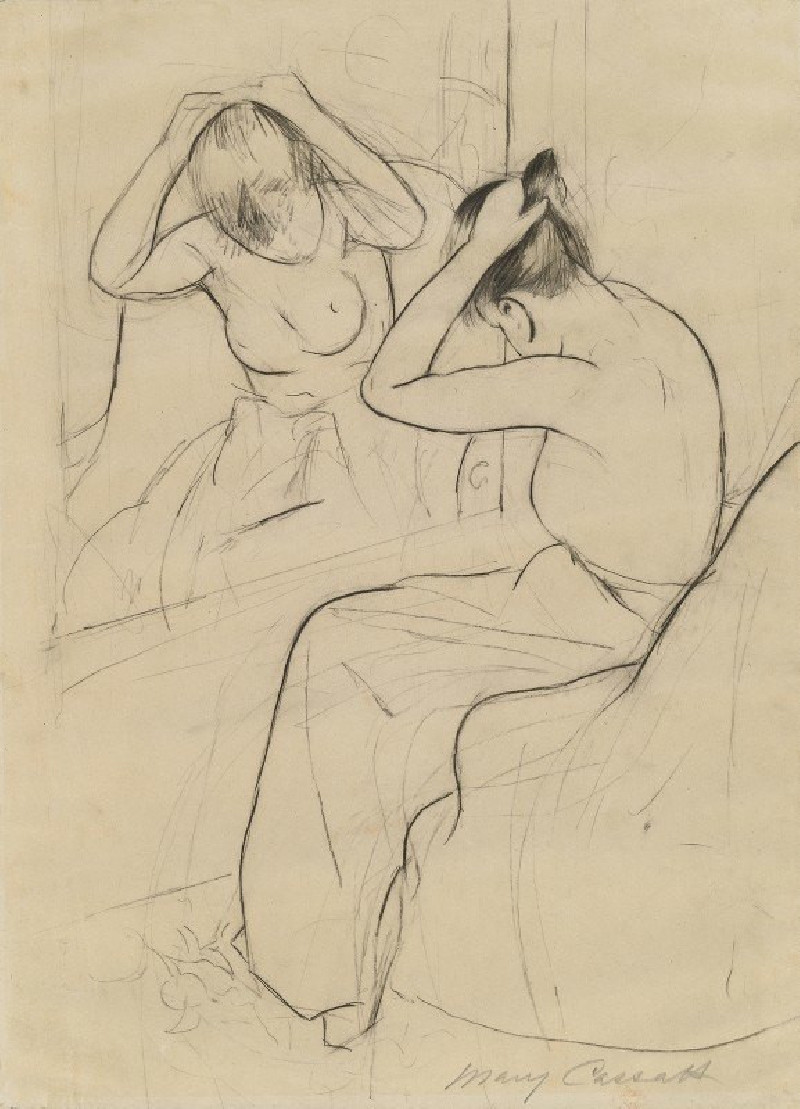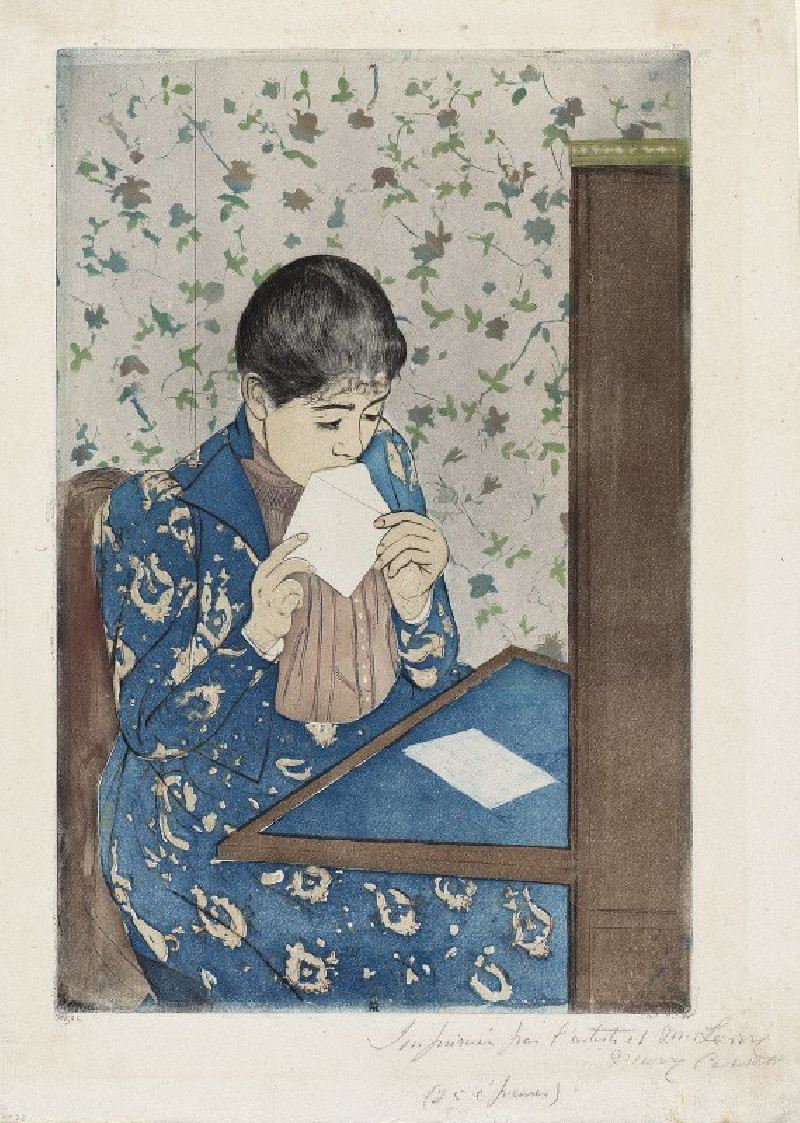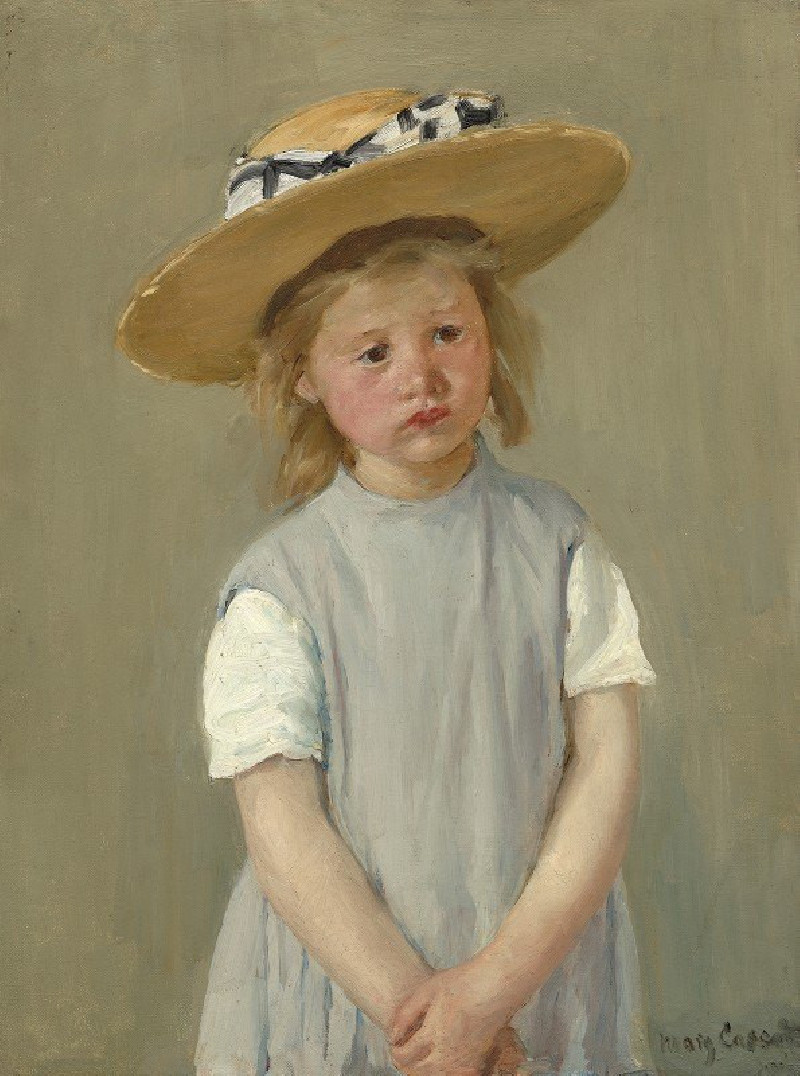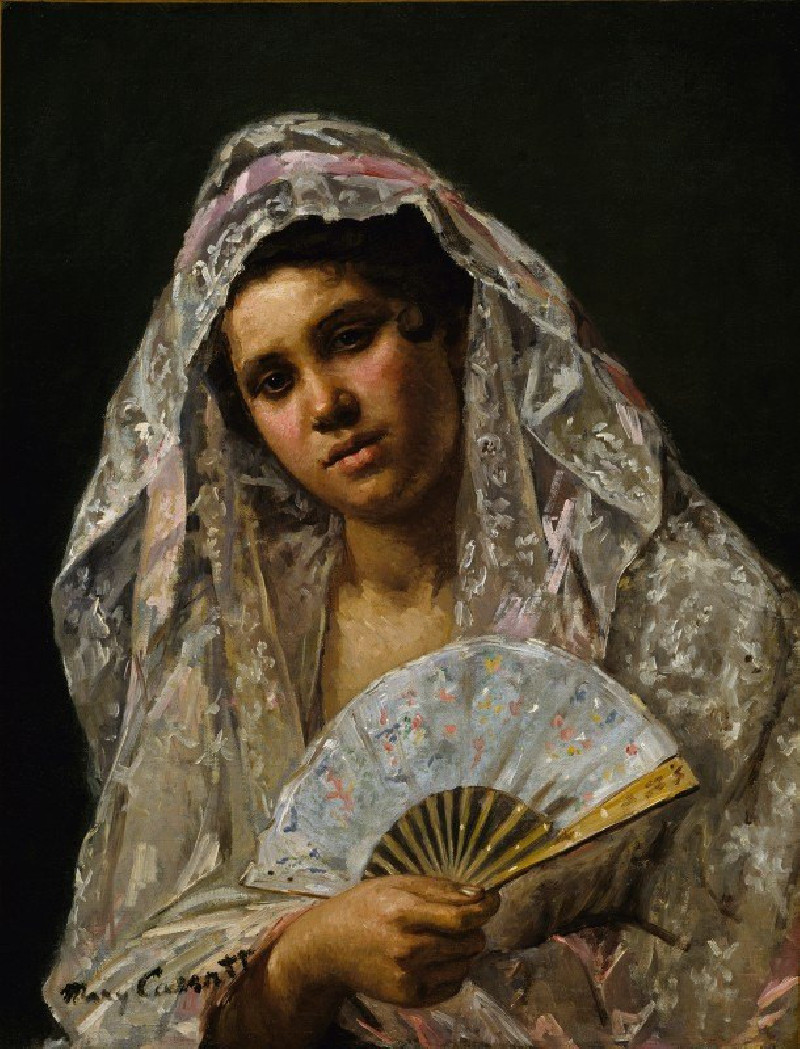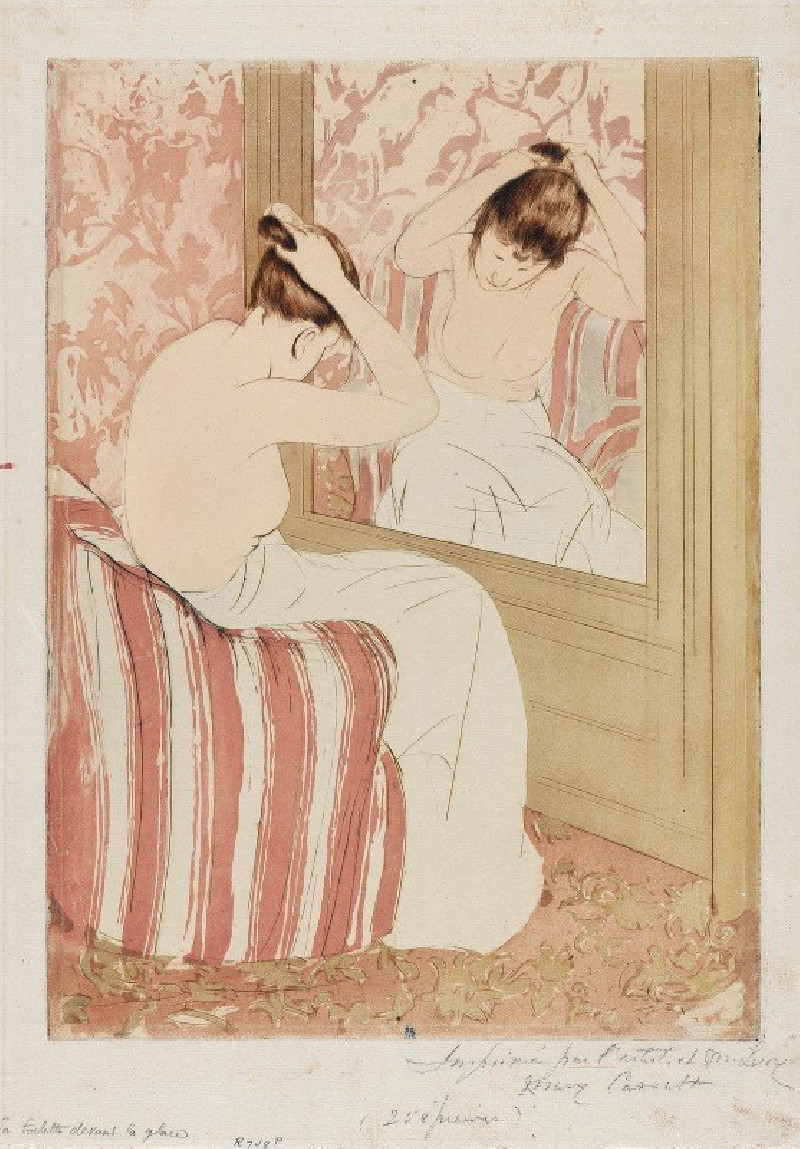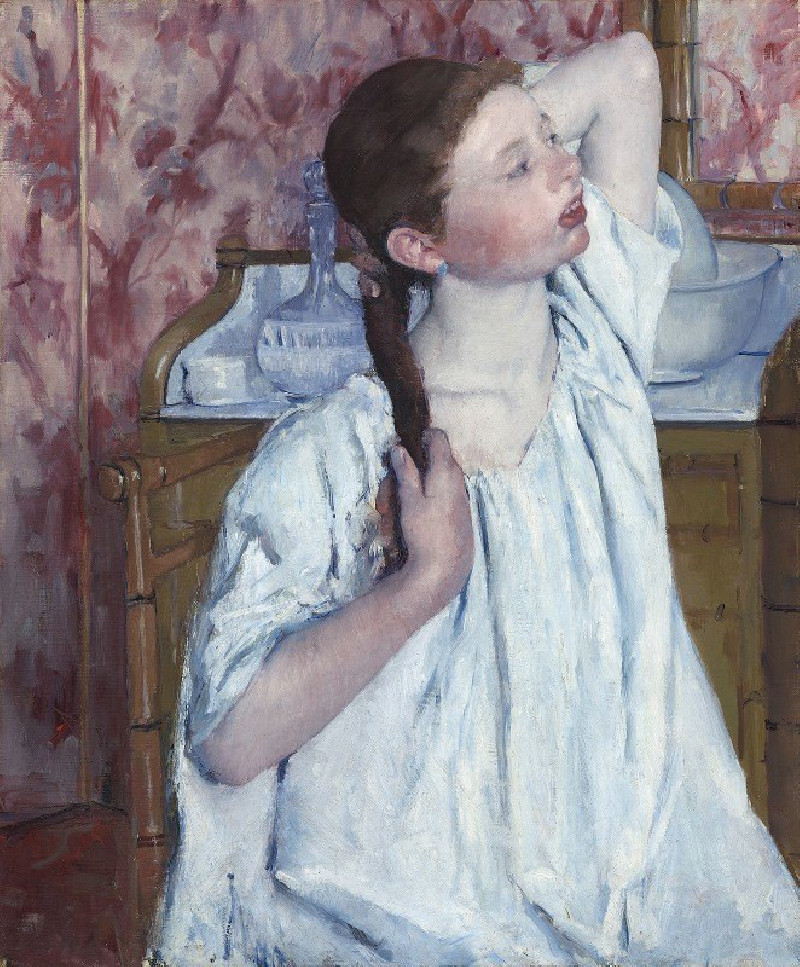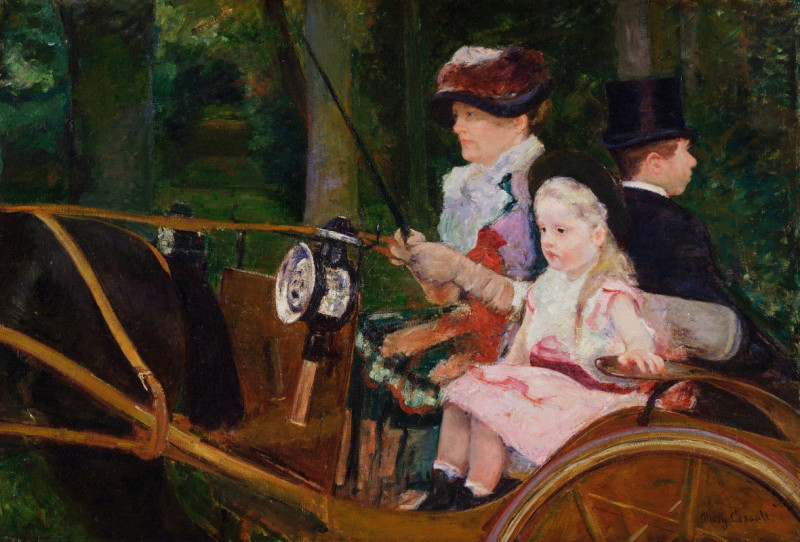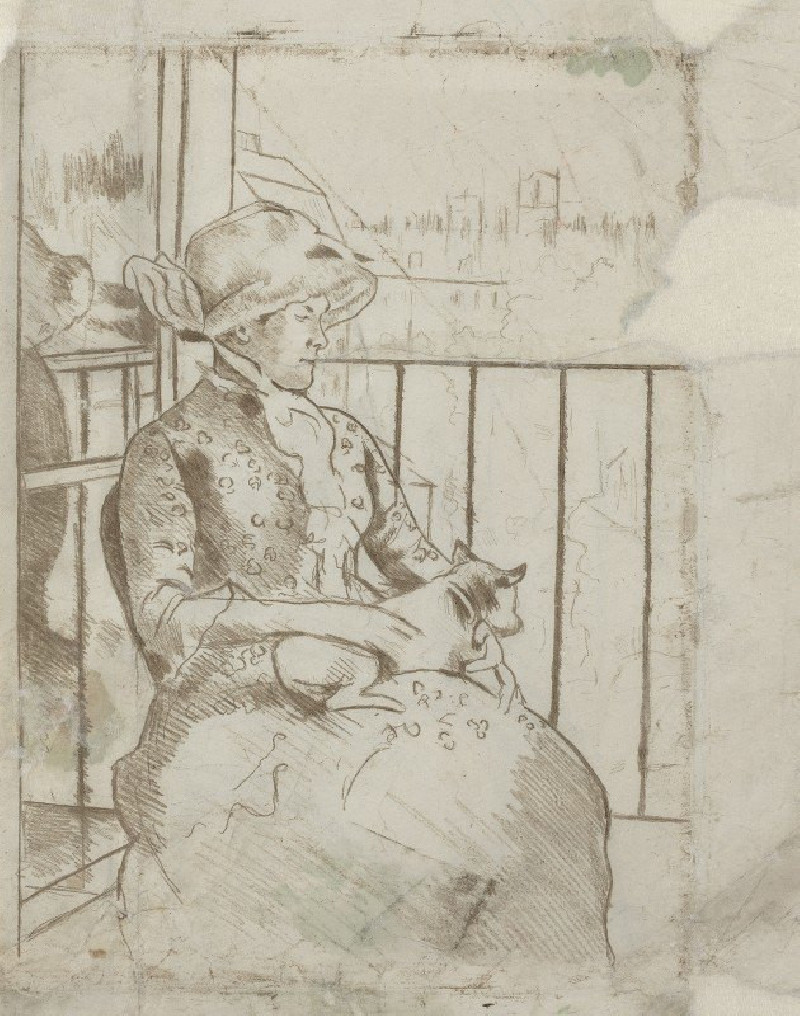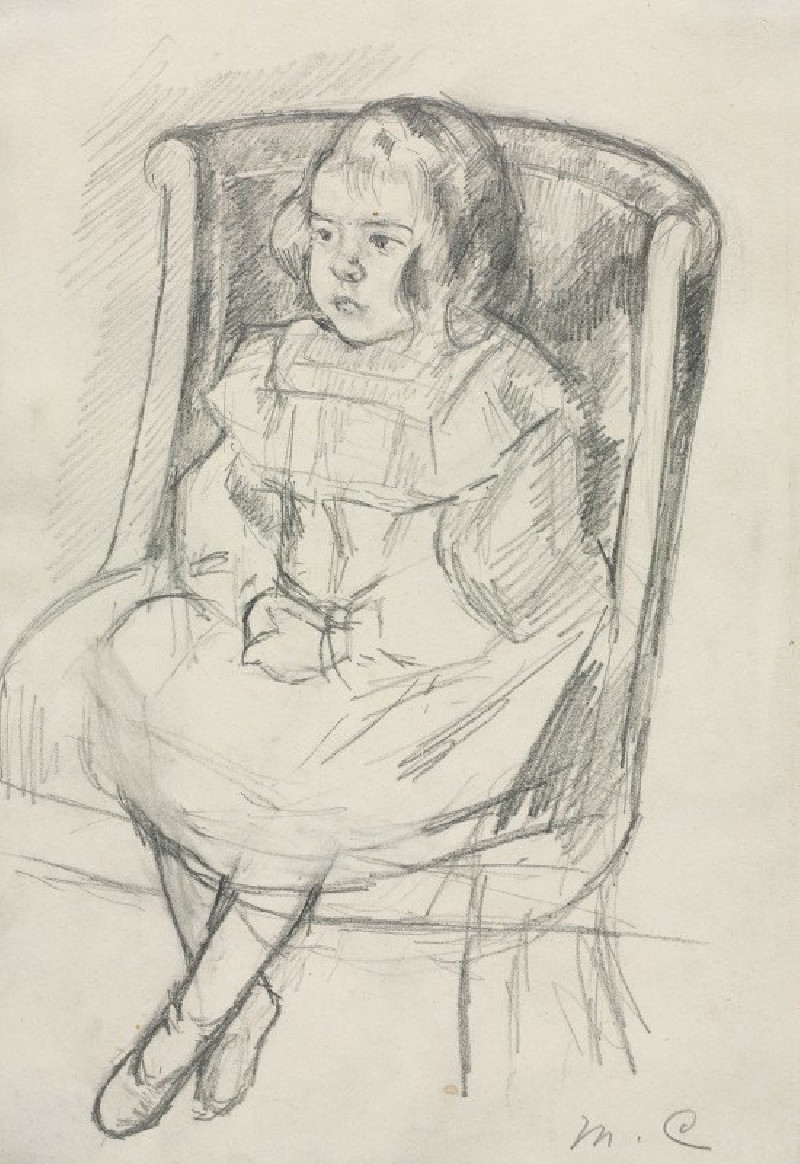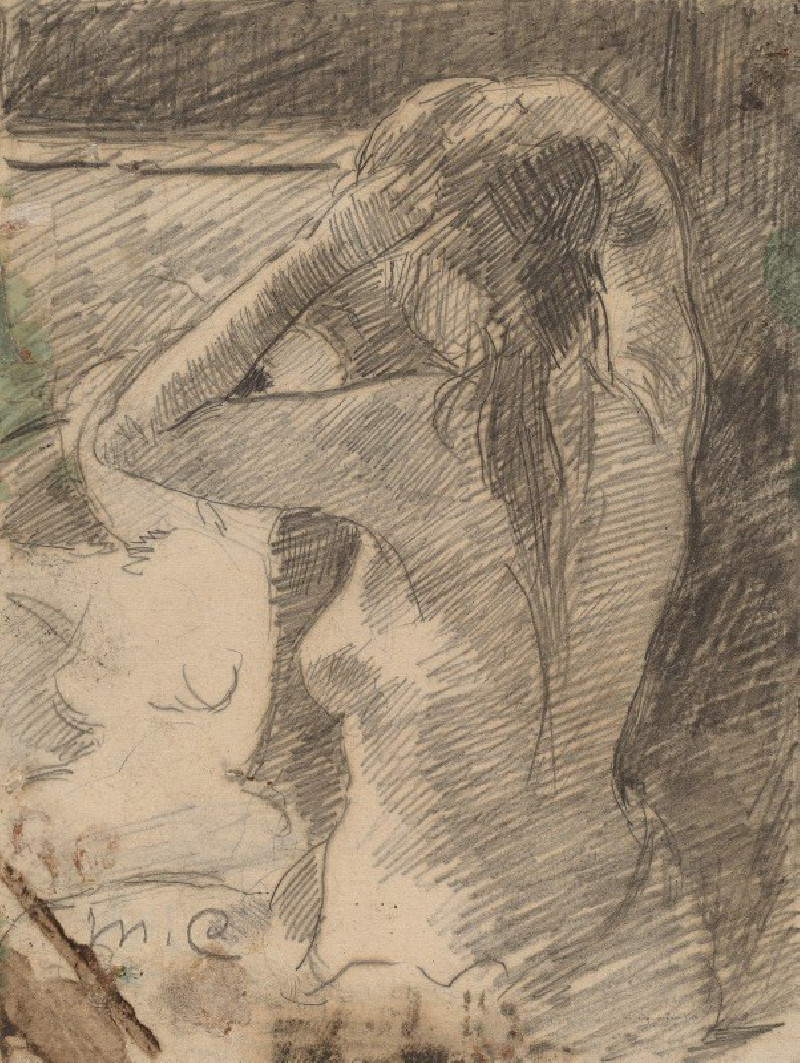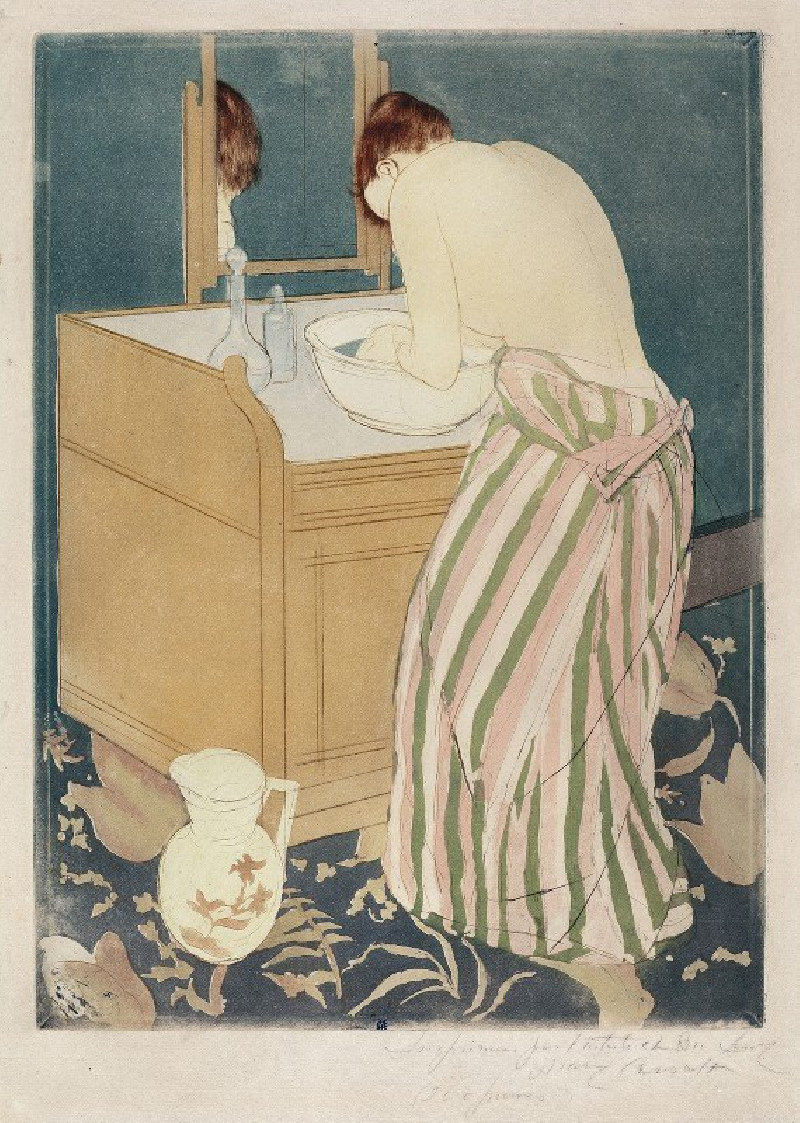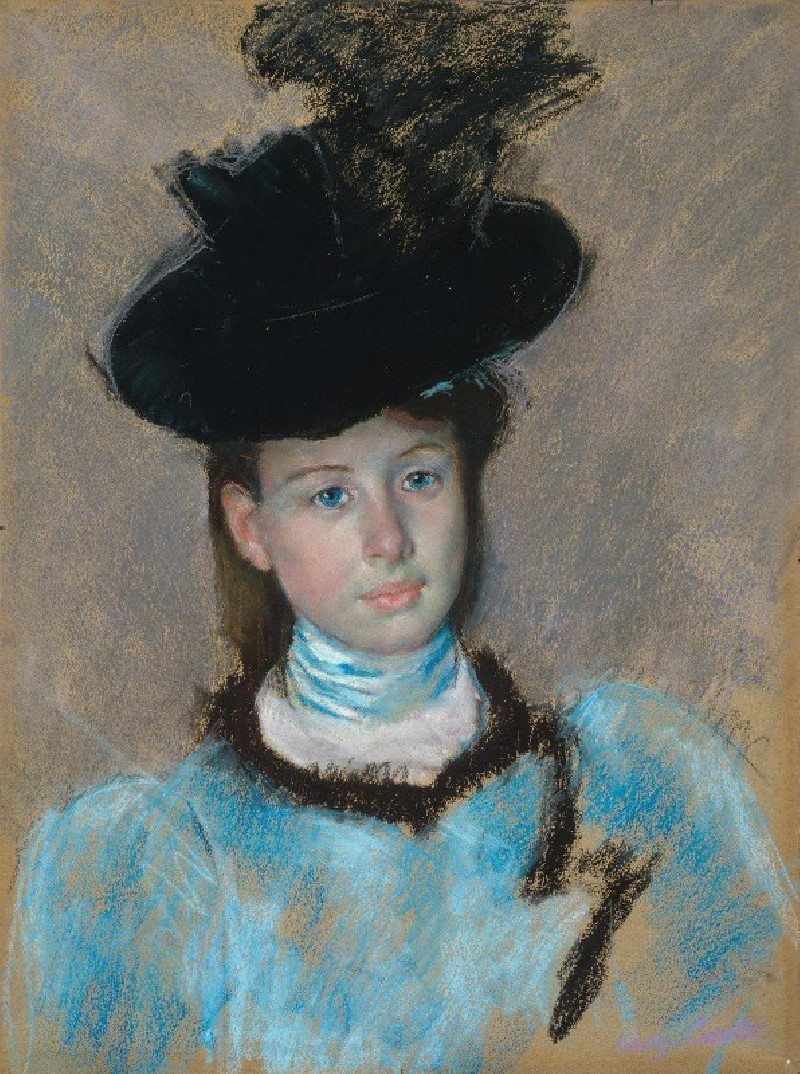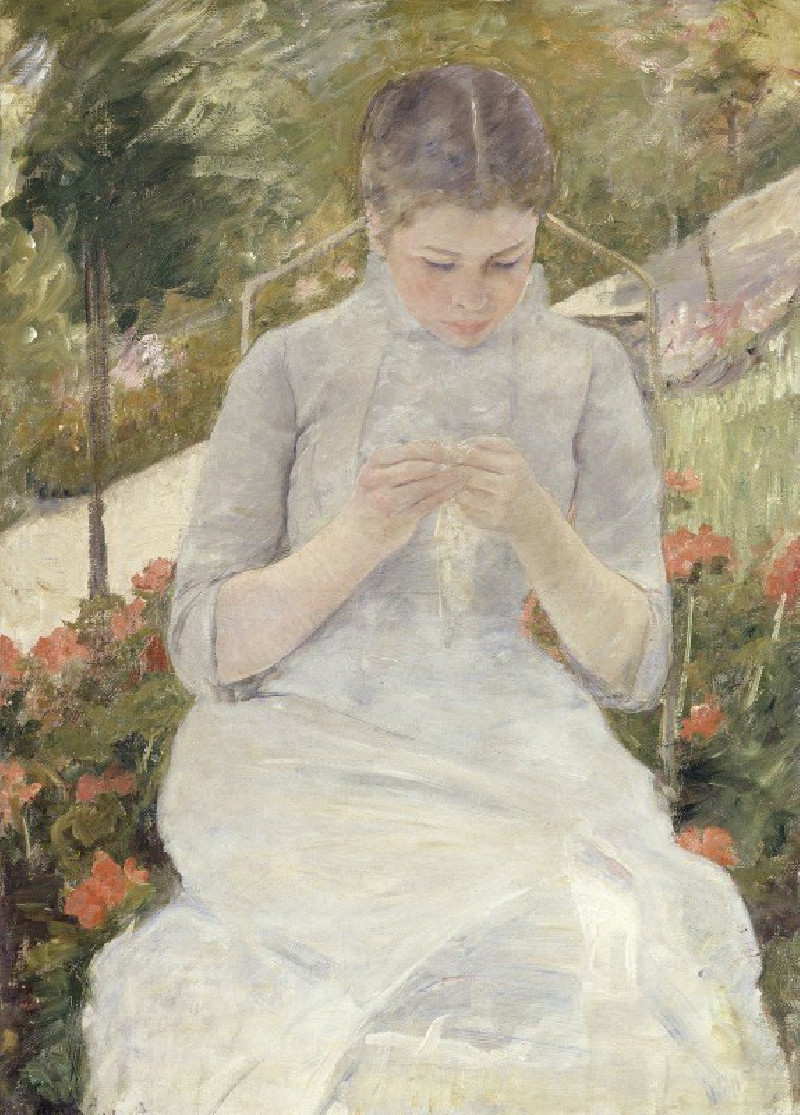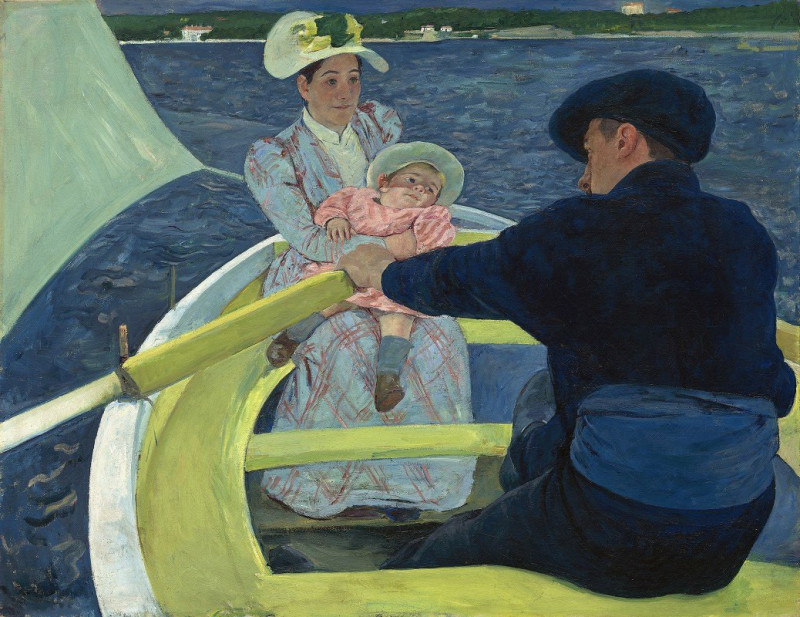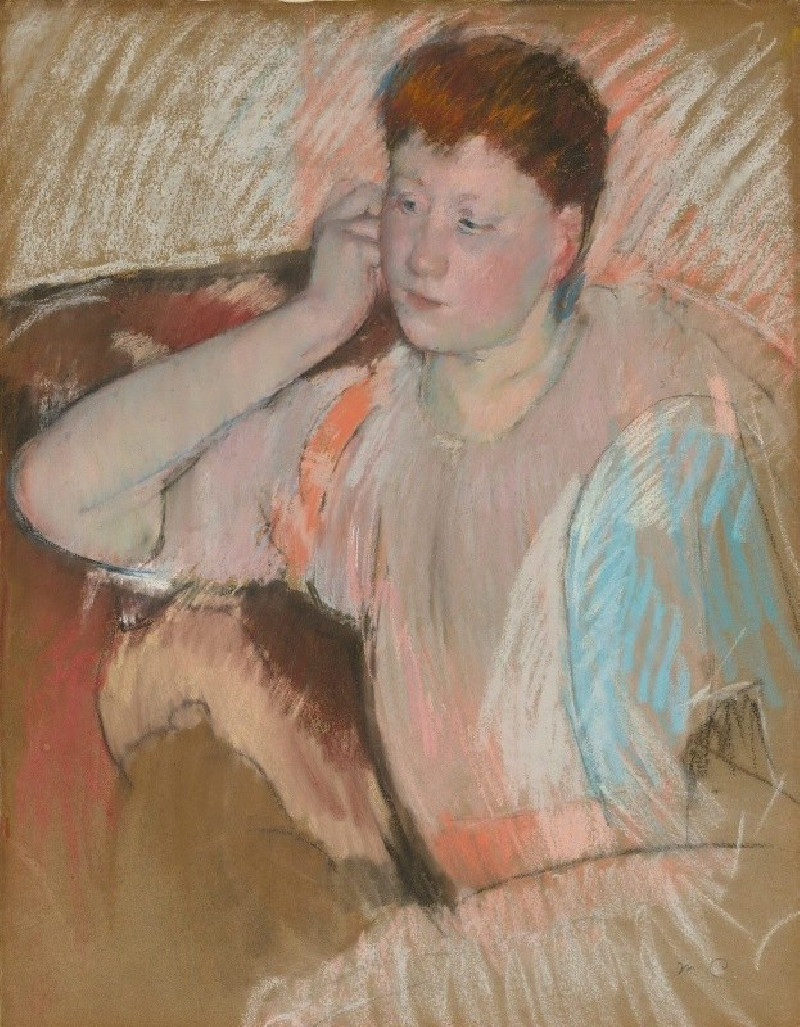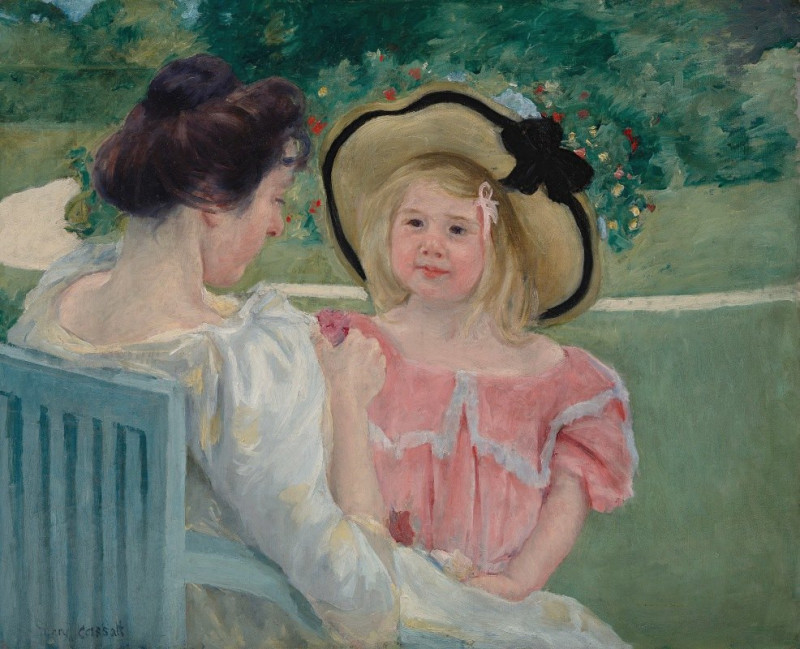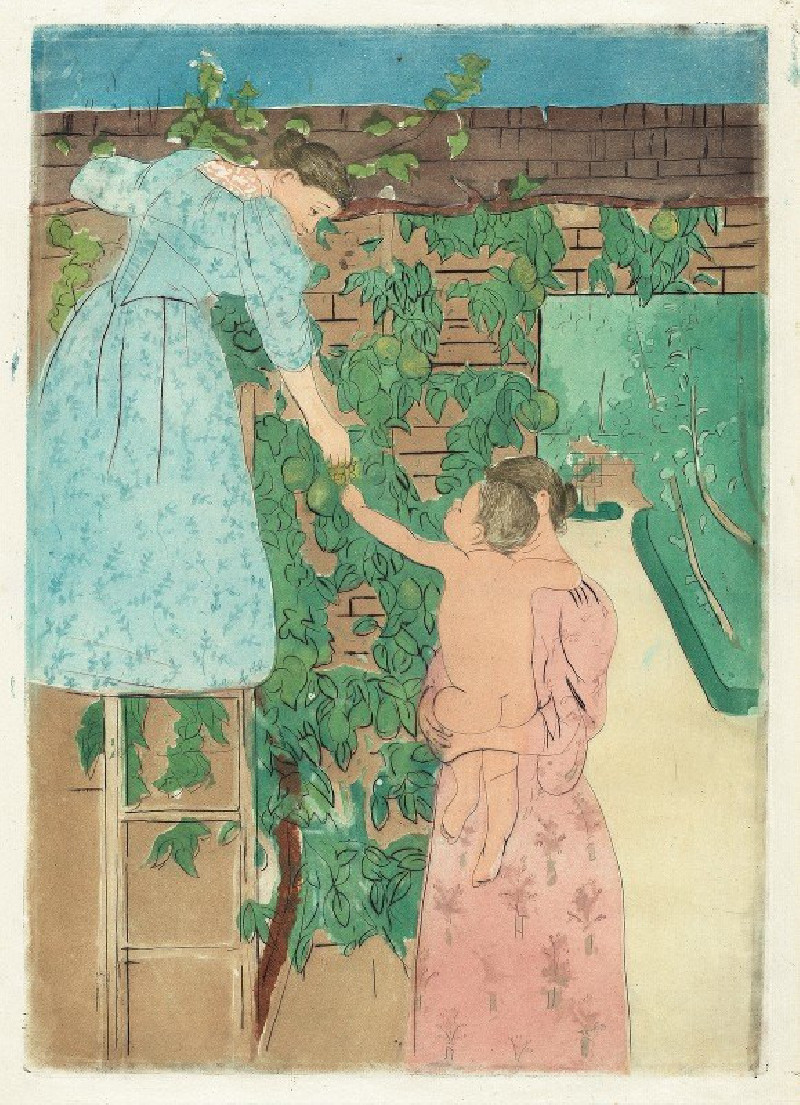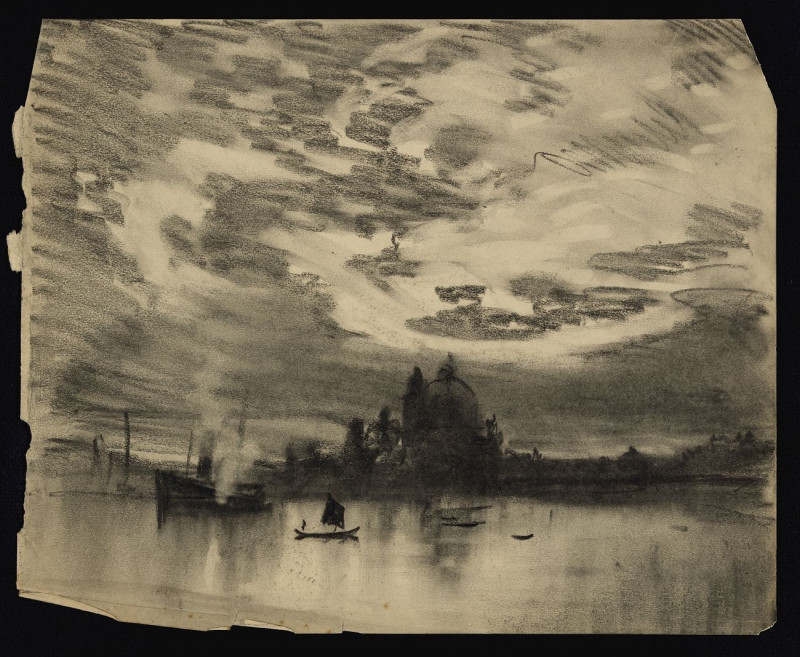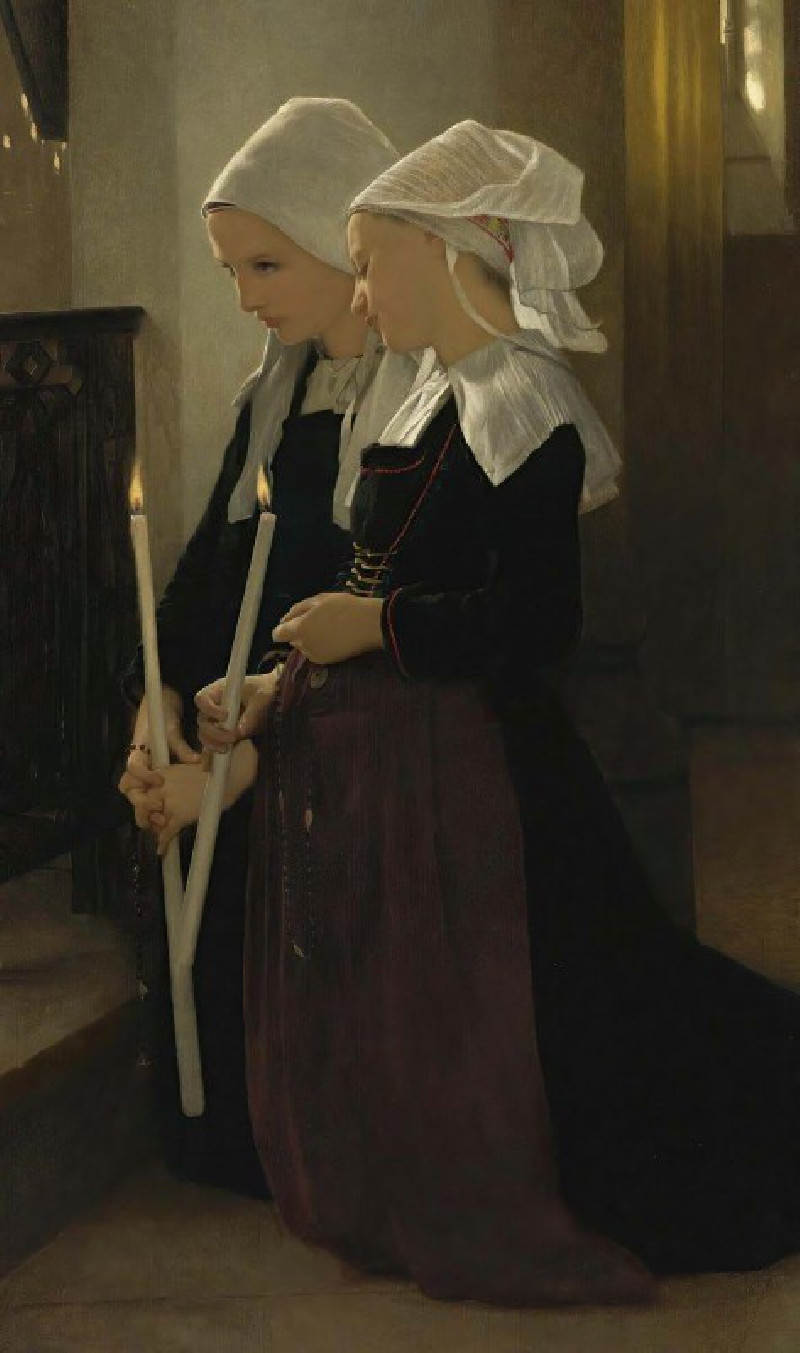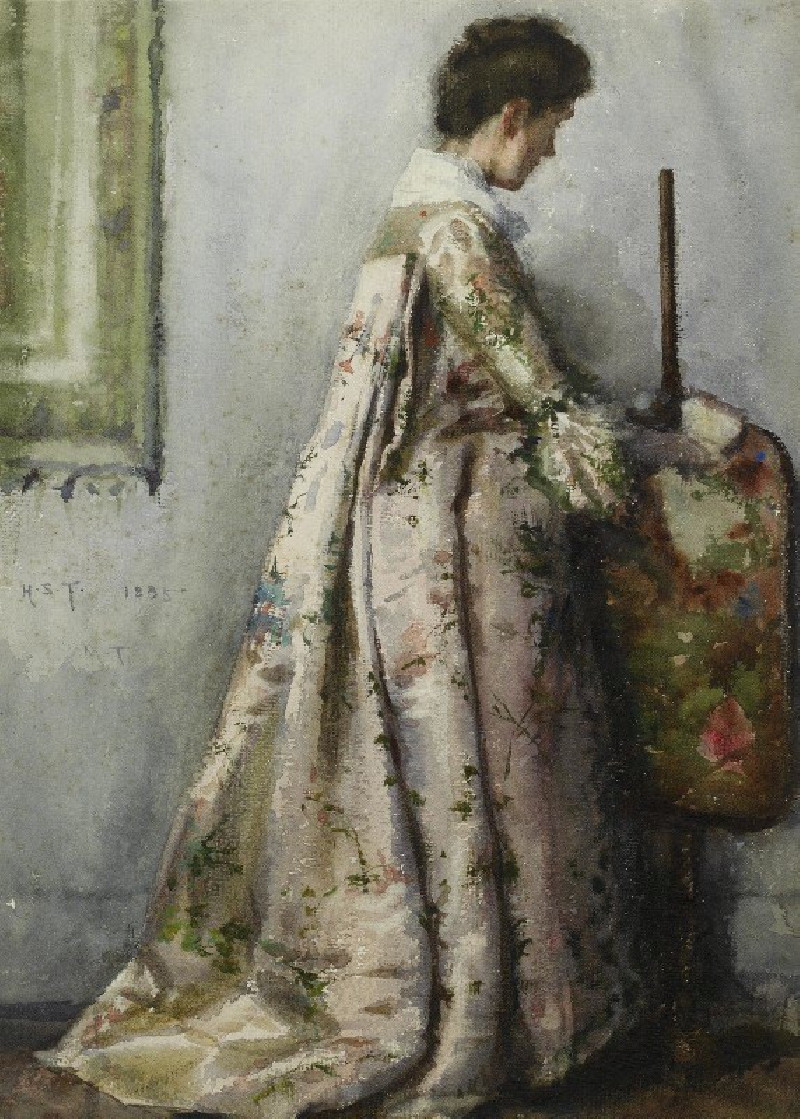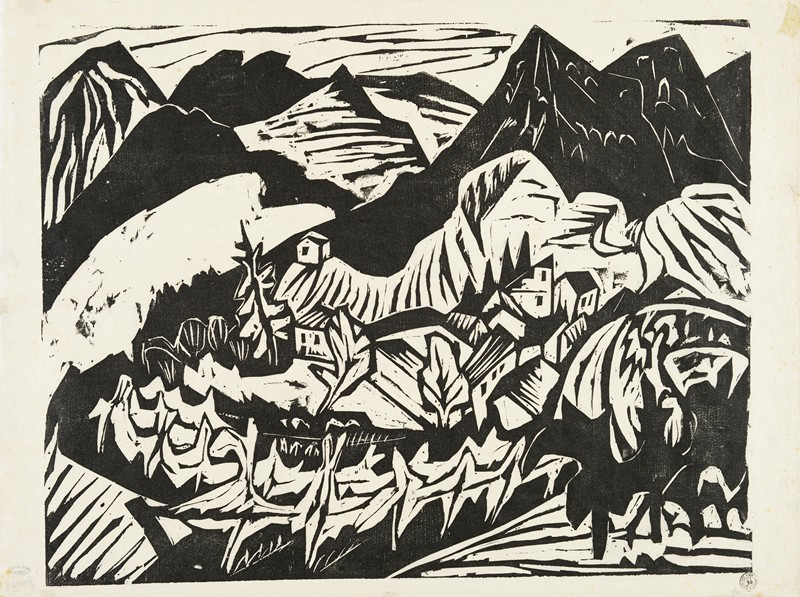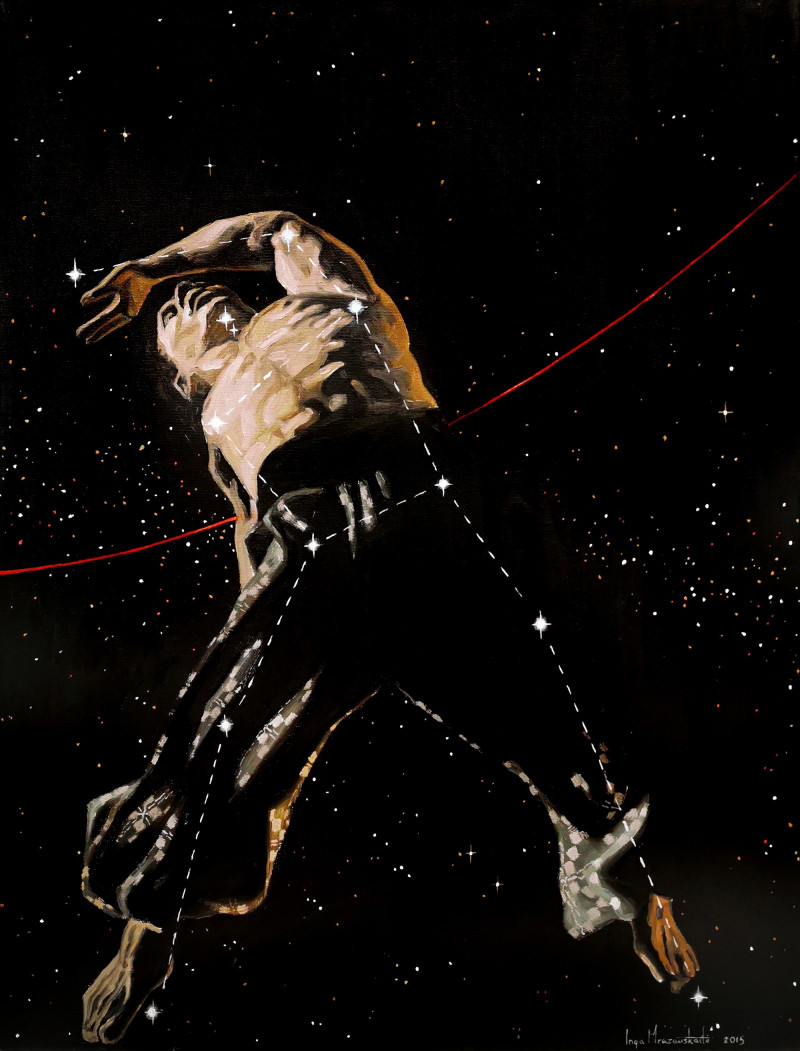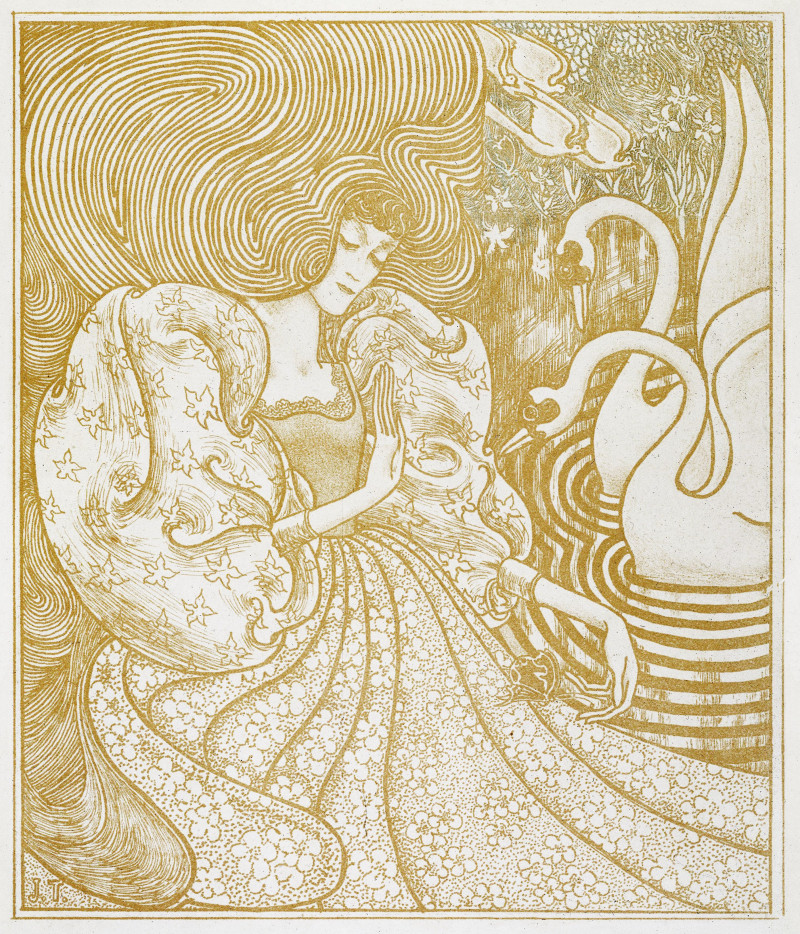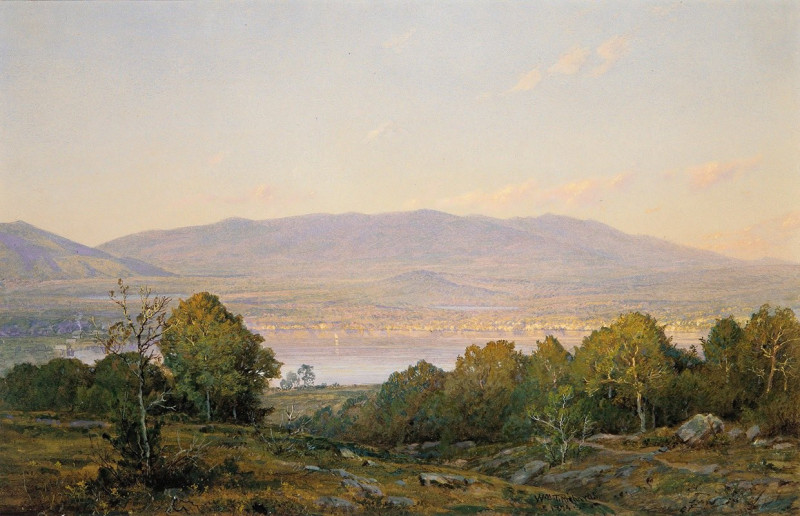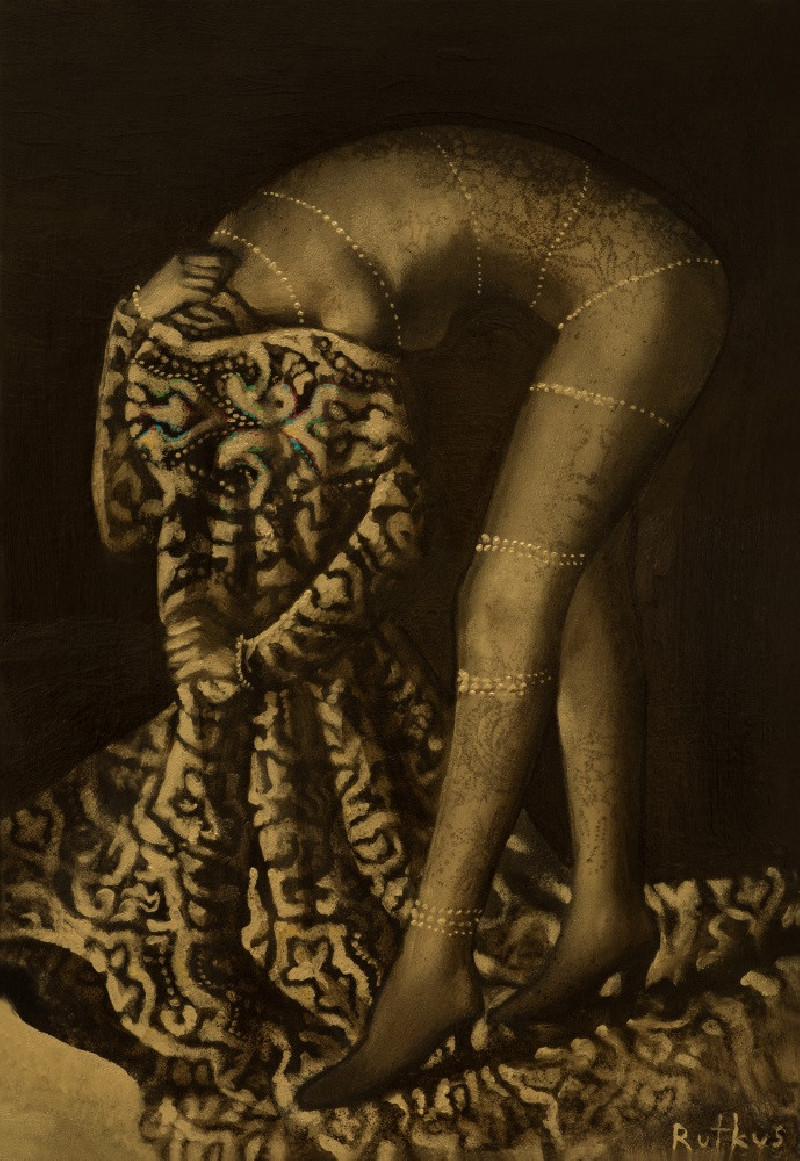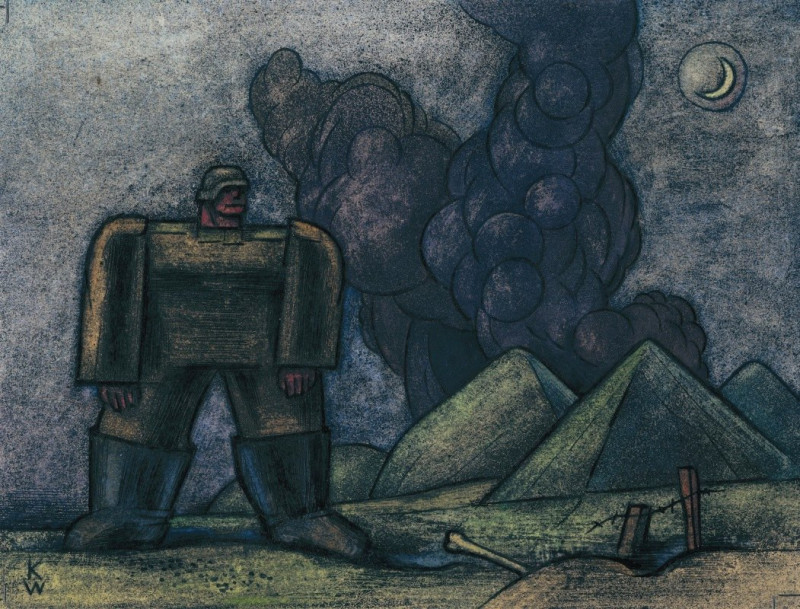Self-Portrait (c. 1880)
Technique: Giclée quality print
Recommended by our customers
More about this artwork
1880)Mary Cassatt, an influential figure in the Impressionist movement, is celebrated not only for her poignant representations of women and children but also for her introspective self-portraits. The piece titled "Self-Portrait" created around 1880, is a striking example of Cassatt's mastery in capturing human expression and her unique approach to self-representation.In this painting, we are presented with an image of the artist herself, depicted with a subtle blend of vulnerability and contemplative poise. Cassatt's face is rendered with loose, expressive brush strokes, embodying the impressionist style's emphasis on capturing a moment in time. Her eyes, thoughtful and slightly downward-looking, along with her slightly parted lips, suggest a moment of introspection or perhaps a fleeting lapse into a private realm.Cassatt is dressed in a dark green jacket and a whimsical hat, the latter adding a touch of individuality and flair, which contrasts with her contemplative expression. The background, executed in soft yellows and greens, provides a gentle, almost ethereal ambiance to the portrait, focusing the viewer’s attention squarely on her facial expression and the upper part of her attire.Distinctive for its emotional depth and technical subtlety, this self-portrait not only showcases Cassatt's skill as an artist but also offers insight into her inner world.
Delivery
Returns
Mary Stevenson Cassatt was an American painter and printmaker. She was born in Allegheny City, Pennsylvania (now part of Pittsburgh’s North Side), but lived much of her adult life in France where she befriended Edgar Degas and exhibited with the Impressionists. Cassatt often created images of the social and private lives of women, with particular emphasis on the intimate bonds between mothers and children.
She was described by Gustave Geffroy as one of "les trois grandes dames" (the three great ladies) of Impressionism alongside Marie Bracquemond and Berthe Morisot.In 1879, Diego Martelli compared her to Degas, as they both sought to depict movement, light, and design in the most modern sense.

